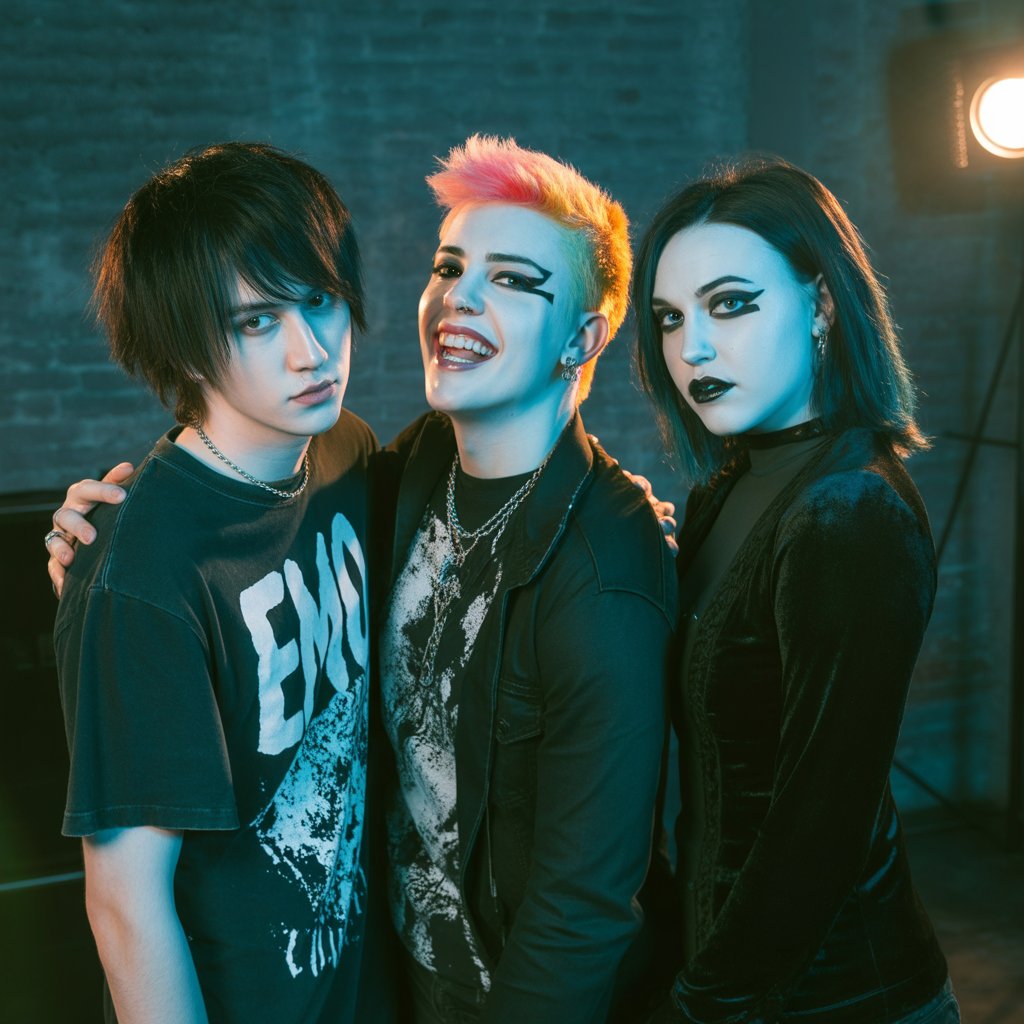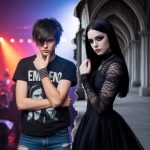Emo, Scene, and Goth – Understanding the Differences

The world of alternative fashion is vast, and within it, three subcultures often stand out: emo, scene, and goth. While all fall under the alternative umbrella, they are frequently confused with one another due to overlapping influences in fashion, makeup, and music. Yet, each has its own history, style, and cultural impact that makes it unique.
Emo Style
Emo culture first gained major popularity in the early 2000s, heavily influenced by bands like My Chemical Romance, Green Day, and Fall Out Boy. The emo style is characterized by dark clothing, ripped jeans, striped long sleeves, and chokers. Hair often includes long, straight bangs covering one eye, sometimes dyed in vibrant shades such as electric blue or green. Makeup typically leans toward a grungy aesthetic—heavy eyeliner, smudged eyeshadow, and expressive looks designed to capture raw emotion.
Scene Style
Though closely related, the scene fashion aesthetic is far more colorful and exaggerated. Scene kids embraced layering, bold patterns, and accessories like bows, suspenders, fingerless gloves, and striped tights. Their hairstyles often featured multiple vibrant colors arranged in “raccoon” stripes, along with teased volume. Makeup leaned into playful exaggeration, often inspired by Japanese gyaru styles, with dramatic contour, bright blush, and large, doll-like eyes. While emo was darker and moodier, scene was loud, playful, and eye-catching.
Goth Style
Unlike emo and scene, goth fashion has roots tracing back to the post-punk movement of the 1980s. It carries a distinct, timeless aesthetic defined by black clothing, Victorian-inspired pieces, lace, leather, and dramatic accessories. Makeup is one of the strongest identifiers of goth culture: pale foundation, dark lipstick, heavy eyeliner, and bold shadow work create a haunting, elegant look. Traditional goth, often called “trad goth,” remains iconic, though many variations have evolved, from romantic goth to cyber goth.

Why the Confusion?
Because these subcultures often overlap in music and style, people frequently mix them up. Emos are sometimes mistaken for goths, scene kids for emos, and goths misunderstood altogether. Yet, each group’s individuality lies in its distinct aesthetic and cultural symbolism. Emo embraces emotion and rebellion, scene thrives on color and exaggeration, while goth channels elegance and darkness.
The Beauty of Alternative Subcultures
Despite their differences, these styles share one powerful trait: self-expression. Whether through bold hair, dramatic makeup, or iconic fashion choices, emo, scene, and goth subcultures all provide a creative outlet for individuality. And while trends evolve, these movements continue to inspire and influence alternative fashion today.
Recent Posts
Categories
Related Articles
Ultimate Style Guide: Emo & Pop Punk Fashion with Black Emo Pants and Tripp Pants
Emo and Pop Punk aren’t just music genres—they’re entire lifestyles. From dark,...
ByemopantsOctober 6, 2025The Famous 2000s Emo Fashion — Is It Back with Emo Pants?
The 2000s were iconic for many reasons, but nothing defined that era...
ByemopantsOctober 6, 2025What It Really Means to Be Emo: Style, Culture & the Power of Emo Pants
Emo isn’t just a genre of music—it’s a way of life, a...
ByemopantsOctober 6, 2025Free Music Festivals in California & The Perfect Vibe with Emo Pants
California is more than beaches, palm trees, and Hollywood stars—it’s also home...
ByemopantsOctober 6, 2025
















Leave a comment